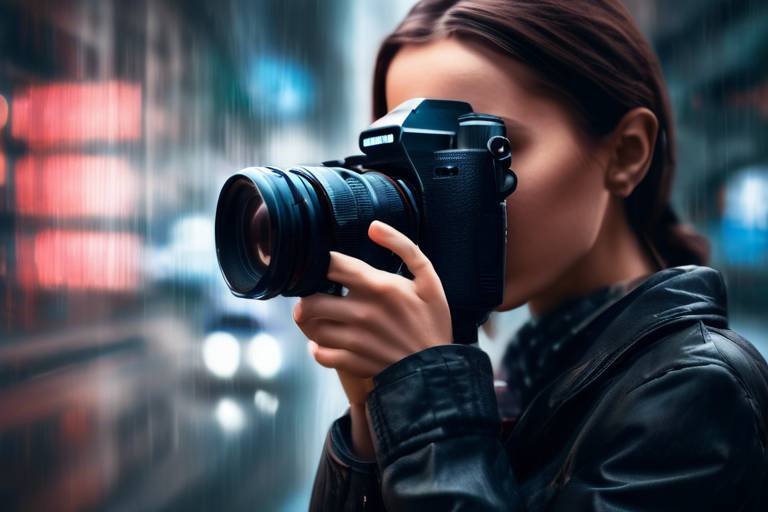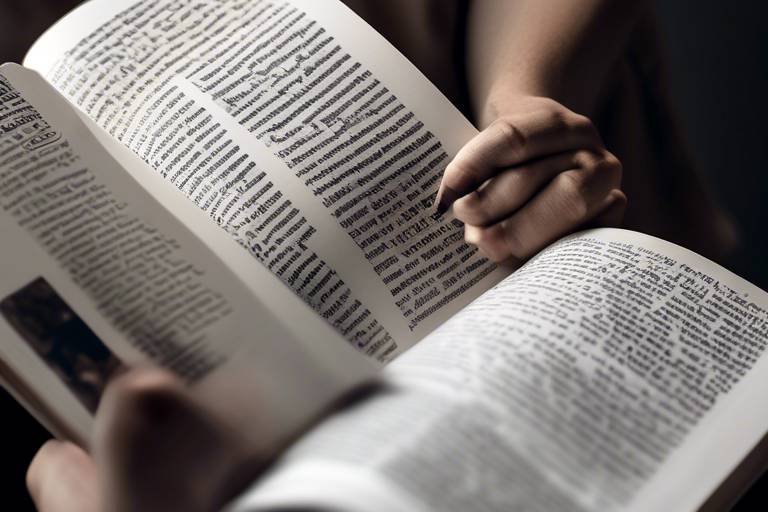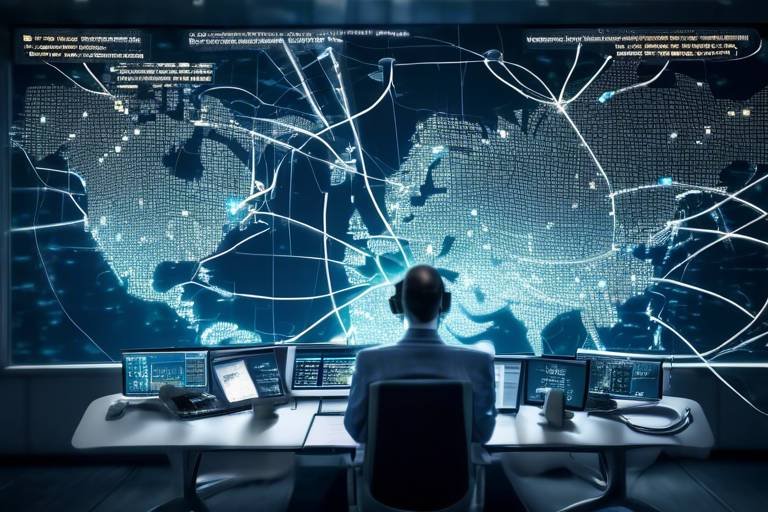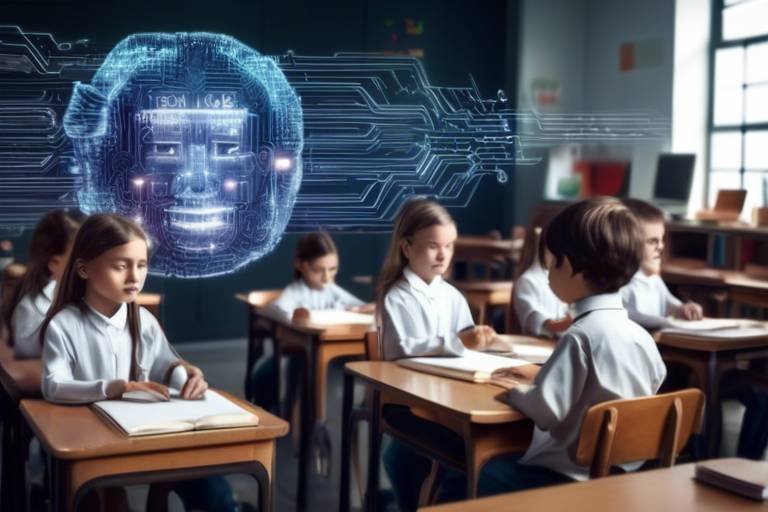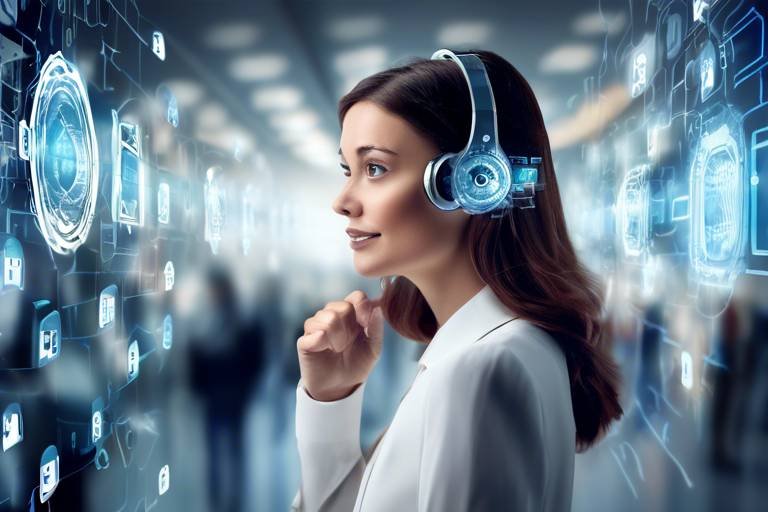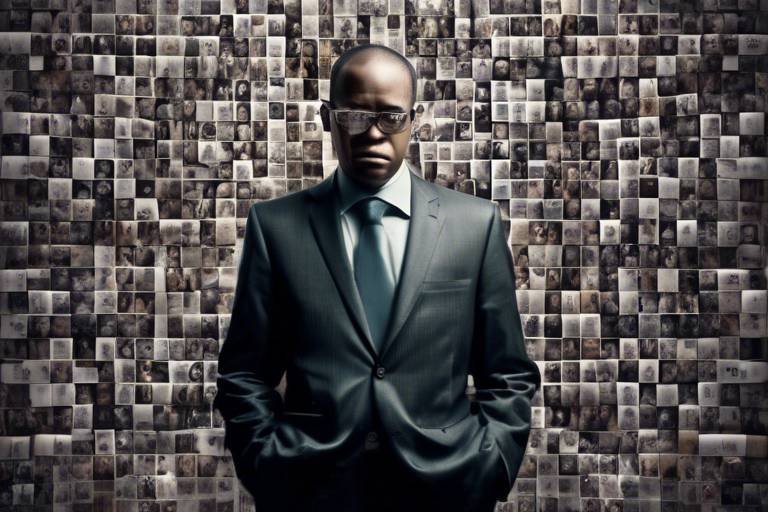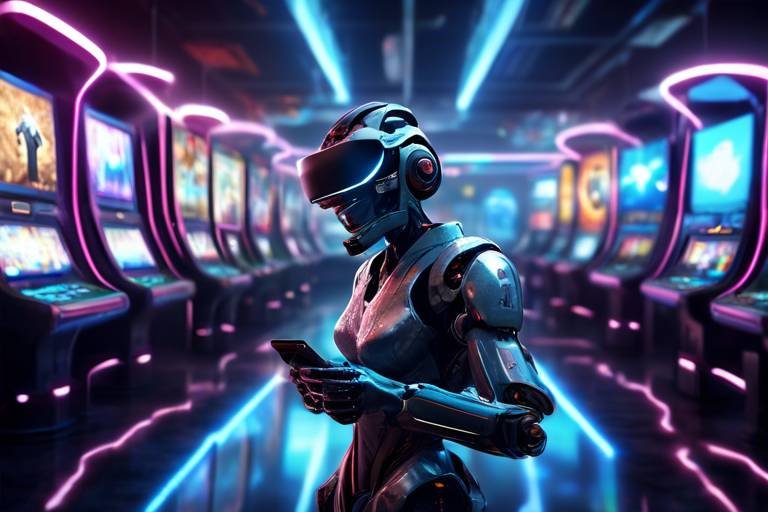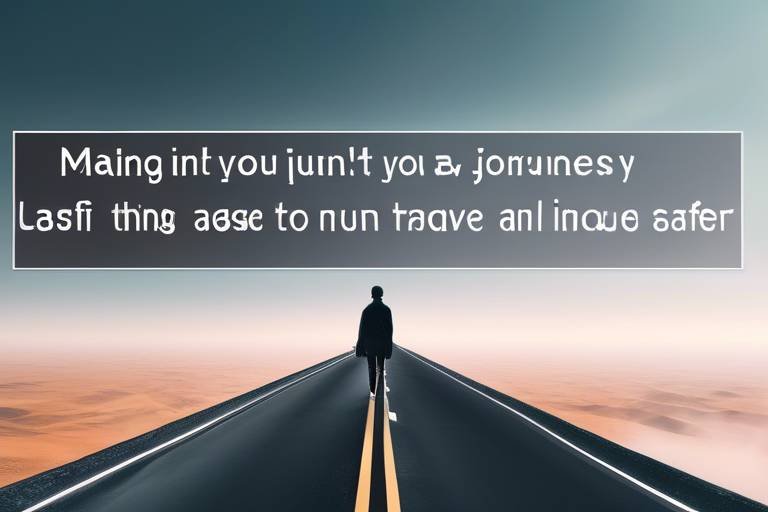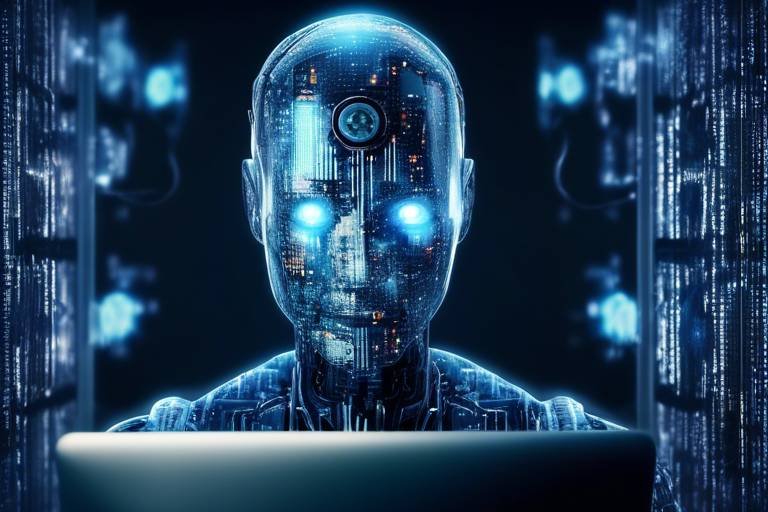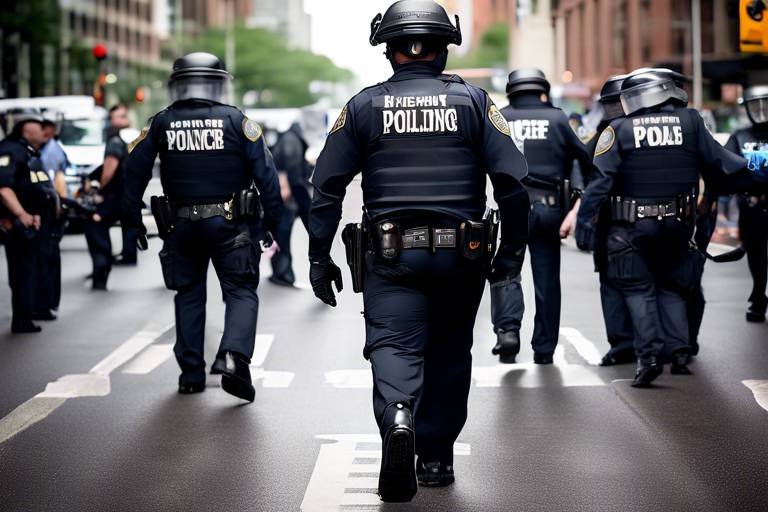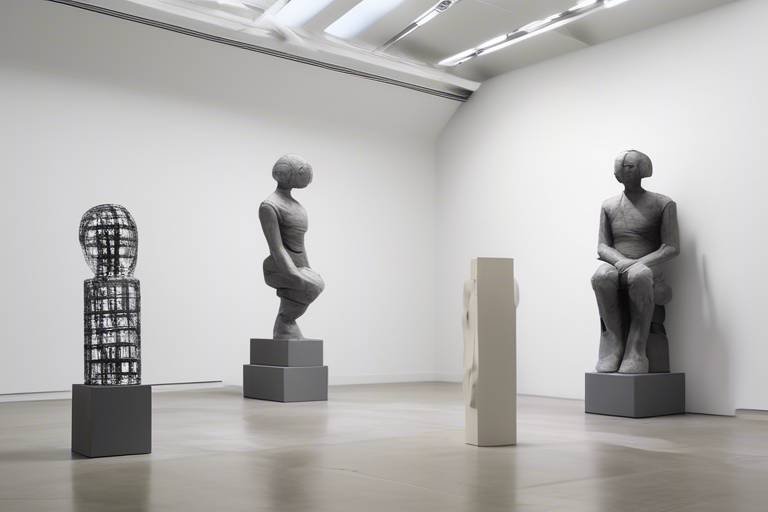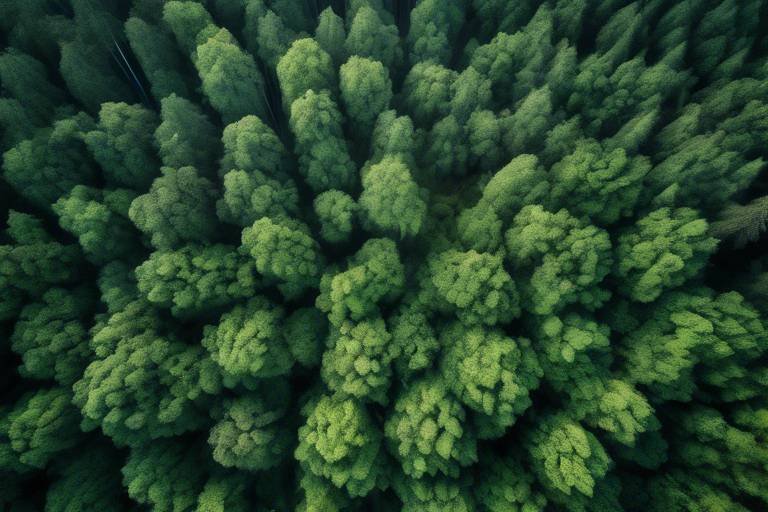How AI is Shaping Modern Photography
In the ever-evolving world of photography, artificial intelligence (AI) is making waves like never before. With its ability to analyze images, suggest edits, and even create art, AI is transforming how photographers approach their craft. Imagine having a personal assistant that not only understands your style but also enhances your creativity! This article dives into the transformative impact of AI on photography, exploring how it revolutionizes image processing, streamlines editing, and unlocks new avenues for artistic expression. As we journey through this fascinating intersection of technology and art, we’ll also peek into what the future holds for this dynamic field.
As AI technology rapidly becomes a staple in photography, it enhances workflows for both amateur and professional photographers alike. The integration of AI tools into everyday photography tasks not only boosts efficiency but also elevates the quality of the final images. Think about it: photographers can now spend less time fiddling with settings and more time focusing on their creative vision. This shift is akin to having a smart camera that learns from your preferences, adapting to your style and making suggestions that align with your artistic goals. With AI, the barriers to entry for photography are lowered, allowing more people to engage with this beautiful art form.
Advanced editing software is now harnessing the power of AI algorithms to streamline the editing process. These AI-powered tools are revolutionizing how photographers edit their images, making it easier and faster to achieve stunning results. For instance, photographers can now automate repetitive tasks that once consumed hours of their time. Imagine the relief of having a tool that can analyze an image and suggest adjustments to brightness, contrast, and saturation with just a click! This not only enhances efficiency but also ensures that the final images are of the highest quality.
One of the most exciting features of AI tools is their ability to perform automated enhancements. These tools can automatically adjust settings like brightness, contrast, and color balance based on the content of the image. For example, popular software like Adobe Photoshop and Lightroom now includes AI-driven features that analyze the scene and apply optimal settings. This makes editing more accessible, especially for beginners who may not have a deep understanding of photography techniques. With AI, anyone can achieve professional-looking results without extensive training.
Another remarkable innovation is the introduction of smart filters powered by AI. These filters allow photographers to apply complex effects with a single click, simplifying the creative process. Whether you're looking to create a dreamy atmosphere or a dramatic black-and-white effect, AI filters can help you achieve your vision effortlessly. Imagine being able to transform an ordinary photo into a stunning piece of art in seconds! This not only saves time but also encourages photographers to experiment with their creativity, pushing the boundaries of traditional photography.
AI has also paved the way for content-aware editing tools that can intelligently fill in or remove elements from images. This functionality is a game-changer for photographers who want to clean up their photos without the tedious manual work. For instance, if there's an unwanted object in the background, AI can analyze the surrounding pixels and seamlessly replace the area, making it look natural. This not only enhances the editing workflow but also allows photographers to focus on their artistic vision rather than getting bogged down in technical details.
AI's ability to recognize and categorize images is revolutionizing how photographers manage and organize their work. With powerful image recognition technology, photographers can easily sort through thousands of photos, tagging and categorizing them based on content, themes, or even emotions. This means less time spent on tedious organization and more time spent on what truly matters: creating stunning images. The implications of image recognition technology are vast, enabling photographers to access their archives with ease and even discover hidden gems they may have overlooked.
AI is not just a tool for efficiency; it also opens new avenues for creativity. Imagine having a partner that can inspire and assist you in your artistic endeavors! AI can analyze your previous works and suggest edits or compositions that align with your unique style. This personalized approach not only enhances the creative process but also encourages photographers to explore new techniques and ideas they may not have considered before. It's like having a creative brainstorming session with a highly intelligent collaborator.
The rise of AI-generated art challenges traditional notions of creativity. Today, artists are collaborating with AI to produce unique pieces that blend human creativity with machine learning. This intersection of AI and photography opens up a world of possibilities, where artists can explore new forms of expression that were previously unimaginable. It's a thrilling time to be a photographer, as AI continues to push the boundaries of what is possible in the world of art.
Furthermore, AI algorithms can analyze a photographer's style and suggest personalized edits or compositions. This feature is particularly valuable for photographers looking to refine their skills or develop a distinct style. By receiving tailored recommendations, photographers can enhance their creative process, making it more enjoyable and productive. It's like having a personal mentor guiding you through your artistic journey, helping you unlock your full potential.
As technology continues to evolve, so will AI's role in photography. We can expect to see even more innovative tools and features that will further shape the industry. From advanced editing software that learns from user behavior to AI-driven cameras that automatically adjust settings for optimal results, the future of photography is bright. Photographers will have the opportunity to push the boundaries of their creativity, exploring new techniques and styles that were once thought to be out of reach. The collaboration between AI and photography is just beginning, and the possibilities are limitless!
Q: How does AI improve the editing process in photography?
A: AI improves the editing process by automating repetitive tasks, suggesting enhancements, and providing smart filters that simplify complex edits.
Q: Can AI help me develop my photography style?
A: Yes! AI can analyze your previous works and suggest personalized edits or compositions that align with your unique style, helping you refine your artistic voice.
Q: Is AI-generated art considered real art?
A: AI-generated art challenges traditional notions of creativity, and many artists view it as a new form of expression that complements human creativity.
Q: What are the future trends in AI and photography?
A: Future trends may include more advanced AI editing tools, AI-driven cameras, and personalized recommendations that will further enhance the creative process for photographers.

The Rise of AI in Photography
Artificial Intelligence (AI) is not just a buzzword anymore; it's a game-changer in the world of photography. Over the past few years, we've witnessed a remarkable transformation as AI technology has become increasingly integrated into both amateur and professional photography workflows. Imagine having a virtual assistant that can analyze your images, suggest edits, and even automate tedious tasks! This is precisely what AI brings to the table, enhancing the creative process while saving precious time.
One of the most significant advantages of AI in photography is its ability to streamline workflows. For instance, consider how photographers used to spend hours sifting through hundreds of images, selecting the best shots. With AI-powered tools, this process is now more efficient. AI algorithms can quickly categorize images based on various criteria such as color, composition, and even facial recognition. This means photographers can focus more on their craft rather than getting bogged down in the minutiae of organizing their work.
Furthermore, AI technology is democratizing photography. Aspiring photographers, who may lack extensive editing skills, can now produce stunning images with minimal effort. AI-driven software can automatically enhance photos by adjusting exposure, contrast, and saturation with just a few clicks. This accessibility is opening doors for many creatives who may have previously felt intimidated by the technical aspects of photography.
Moreover, the integration of AI into photography is not just about efficiency; it’s about unlocking new creative possibilities. Photographers can experiment with styles and techniques that were once time-consuming or difficult to achieve. For instance, AI can analyze a photographer's previous work and suggest edits that align with their unique style, making the creative process more personalized and engaging.
In summary, the rise of AI in photography is reshaping how we capture and edit images. It enhances efficiency, democratizes access to quality photography, and opens up new avenues for creativity. As we continue to embrace these technological advancements, it’s exciting to think about how they will further evolve the art of photography in the years to come.

AI-Powered Editing Tools
In the fast-paced world of photography, have emerged as game-changers, revolutionizing the way photographers approach their craft. These tools harness the incredible power of artificial intelligence to enhance the editing process, making it not only more efficient but also more accessible to photographers of all skill levels. Imagine being able to transform your images with just a few clicks, allowing you to focus more on your creative vision instead of getting bogged down by tedious editing tasks. The integration of AI into editing software has opened up a realm of possibilities, enabling photographers to produce stunning visuals in less time.
One of the most exciting aspects of AI-powered editing tools is their ability to automate complex tasks. Traditionally, editing photos required a keen eye and a lot of manual adjustments. Now, with the advent of AI, these tools can analyze your images and make intelligent recommendations or adjustments automatically. For instance, if you’re working on a portrait, the software can detect faces and adjust skin tones, brightness, and contrast to enhance the subject without compromising the overall image quality. This not only saves time but also ensures that the final product is polished and professional.
There are several key features that highlight the effectiveness of AI in editing tools:
- Automated Enhancements: AI tools can automatically adjust settings like brightness, contrast, and saturation based on the image’s content. This means less time fiddling with sliders and more time creating.
- Smart Filters: Imagine applying complex effects with just one click. Smart filters powered by AI allow photographers to experiment with various looks without the hassle of manual adjustments.
- Content-Aware Editing: This feature utilizes AI to intelligently fill in or remove elements from images. Whether you want to eliminate distractions or seamlessly blend elements, content-aware editing makes it possible.
Let’s take a closer look at how these features work in practice. For example, when using a tool with automated enhancements, you might find that the software analyzes your image and suggests the optimal settings to achieve the desired look. This not only speeds up the editing process but also helps photographers learn about effective adjustments over time. Similarly, smart filters can transform an ordinary shot into something extraordinary, allowing for creative experimentation without the steep learning curve.
Moreover, content-aware editing tools are particularly impressive. They can analyze the context of your image and decide the best way to fill in gaps or remove unwanted elements. This is like having a virtual assistant who understands your artistic intent and works to achieve it. Imagine taking a landscape photo and wanting to remove a stray branch from the corner—content-aware tools can do this seamlessly, making it appear as if the branch was never there in the first place!
In conclusion, AI-powered editing tools represent a significant leap forward in the photography industry. They not only enhance the quality of images but also empower photographers to express their creativity without the constraints of time-consuming editing processes. As these technologies continue to evolve, we can expect even more exciting advancements that will further streamline workflows and inspire new creative possibilities.

Automated Enhancements
In the fast-paced world of photography, time is often of the essence. Photographers, whether seasoned professionals or enthusiastic amateurs, are always on the lookout for ways to streamline their workflows without sacrificing quality. Enter , a game-changing feature powered by artificial intelligence (AI) that has revolutionized the editing process. Imagine having a virtual assistant that can analyze your images and make instant adjustments to settings like brightness, contrast, saturation, and more. This technology not only saves time but also helps photographers achieve stunning results with minimal effort.
One of the most exciting aspects of automated enhancements is their ability to learn and adapt. AI algorithms analyze thousands of photographs to understand what makes an image visually appealing. They can identify elements such as lighting conditions, color palettes, and composition styles. This means that when you upload a photo, the AI can suggest adjustments that align with your unique style or the aesthetic you’re aiming for. For instance, if you frequently shoot landscapes, the AI may automatically enhance the greens and blues in your images, making the scenery pop without you lifting a finger.
Moreover, many popular editing software programs now come equipped with these automated features. Here’s a brief overview of how some of them work:
| Software | Automated Enhancement Features |
|---|---|
| Adobe Lightroom | Auto Tone, Auto White Balance |
| Skylum Luminar | AI Sky Replacement, AI Enhance |
| Capture One | Auto Adjustments, Color Editor |
These tools exemplify how AI-driven enhancements can not only speed up the editing process but also elevate the quality of the final images. For instance, Adobe Lightroom's Auto Tone feature analyzes the image and applies adjustments to exposure, contrast, highlights, and shadows. This means that even if you’re not an editing whiz, you can still produce professional-looking photos with just a click.
But let’s not forget about the creative side of photography. Automated enhancements can also serve as a source of inspiration. By seeing how AI interprets your images, you might discover new styles or techniques you hadn’t considered before. It’s like having a creative partner who nudges you towards unexplored territories in your artistry.
As we continue to embrace these automated features, it’s essential to remember that they are tools to enhance our creativity, not replace it. They can help us achieve our vision faster and more efficiently, allowing us to focus on the aspects of photography that truly matter—capturing the moment and telling a story through our images.
In summary, automated enhancements powered by AI are transforming the way photographers approach editing. With their ability to analyze and improve images with precision, these tools not only save time but also inspire creativity. The future of photography looks brighter than ever, thanks to the incredible advancements in AI technology.

Smart Filters
In the realm of photography, have emerged as a game-changer, revolutionizing the way photographers approach their craft. These AI-powered tools allow users to apply complex effects and enhancements with just a single click. Imagine having the ability to transform an ordinary snapshot into a breathtaking piece of art without spending hours in front of a computer screen. That’s the magic of smart filters!
What makes these filters so remarkable is their ability to analyze the content of an image and apply adjustments that suit the specific elements within the frame. For instance, if you have a landscape photo with a bright sky and dark foreground, a smart filter can intelligently enhance the colors and contrast, ensuring that both areas look stunning without manual tweaking. This not only saves time but also opens up new avenues for creativity. Photographers can experiment with various styles and effects without the fear of ruining their images, as they can easily revert back to the original.
Let’s delve into some of the most popular smart filters available in leading editing software:
- Portrait Enhancer: Automatically smooths skin tones and enhances facial features, making portraits pop.
- Landscape Booster: Enhances the colors of the sky and greenery, giving landscapes a more vibrant and lifelike appearance.
- Artistic Effects: Applies painterly styles or abstract effects to images, allowing photographers to explore their artistic side.
These filters not only simplify the editing process but also encourage experimentation. Photographers can quickly try out different looks and styles, which can lead to unexpected and exciting results. The integration of smart filters into editing software means that even those with minimal editing experience can achieve professional-quality results. This democratization of technology is a significant step forward, allowing more people to express their creativity through photography.
As we look to the future, it’s clear that smart filters will continue to evolve. With advancements in AI, we can expect even more sophisticated algorithms that can understand and interpret images on a deeper level. This means that the filters of tomorrow may not only enhance images but also suggest creative directions based on a photographer’s unique style. The possibilities are endless, and it’s an exciting time to be part of the photography community.

Content-Aware Editing
When it comes to the realm of photography, stands out as a revolutionary feature that has transformed the way photographers approach their craft. Imagine having a tool that not only understands the content of your images but also makes intelligent decisions about how to enhance them. That's precisely what content-aware editing does! It uses advanced AI algorithms to analyze the elements within a photograph, allowing for seamless adjustments and enhancements.
One of the most significant advantages of content-aware editing is its ability to intelligently fill in or remove unwanted elements from an image. For instance, if you have a stunning landscape shot but a random passerby has wandered into the frame, content-aware tools can help you remove that distraction without leaving behind an awkward gap. The AI analyzes the surrounding pixels and fills in the space as if that person was never there, making your edits look natural and cohesive.
To give you a clearer idea of how this works, let's break down the process:
- Analysis: The AI scans the image to identify the subject and background details.
- Selection: You can select the area you want to edit, whether it’s removing an object or adjusting a specific section.
- Filling: The AI generates new content based on the surrounding pixels, ensuring that the edited area blends seamlessly with the rest of the image.
This technology not only saves time but also enhances creativity. Photographers can focus more on their artistic vision rather than getting bogged down with tedious editing tasks. For example, a photographer working on a portrait can quickly remove blemishes or distractions in the background, allowing them to present their subject in the best light possible. The result? A polished image that retains its original charm and appeal.
Moreover, content-aware editing is not limited to just object removal. It can also assist in tasks like object replacement, where you might want to swap out a dull sky for a more vibrant sunset or replace a plain background with something more dynamic. This opens up a world of creative possibilities, allowing photographers to experiment and push the boundaries of their artistry.
As we look to the future, content-aware editing is likely to become even more sophisticated. With continuous advancements in AI technology, we can expect tools that not only recognize objects but also understand context, enhancing the editing process even further. Imagine an AI that could suggest edits based on the mood of your photograph or even the story you want to tell through your images!
In conclusion, content-aware editing is a game-changer for photographers, providing them with the power to enhance their images in ways that were previously unimaginable. By leveraging AI technology, photographers can achieve stunning results with less effort, allowing them to focus on what they love most—capturing the beauty of the world around them.
- What is content-aware editing? Content-aware editing is a feature that uses AI to intelligently analyze and edit images by filling in or removing elements seamlessly.
- How does content-aware editing work? It works by analyzing the image, allowing users to select areas for editing, and then filling those areas with content that matches the surrounding pixels.
- Can I use content-aware editing for complex edits? Yes! It can handle both simple object removal and more complex tasks like object replacement and background adjustments.
- Is content-aware editing available in all photo editing software? Not all software includes this feature, but many popular programs like Adobe Photoshop and Lightroom offer advanced content-aware tools.

AI in Image Recognition
Artificial Intelligence (AI) is not just a buzzword; it’s a game changer in the world of photography, particularly when it comes to image recognition. Imagine having a personal assistant that can sift through thousands of photos in mere seconds, identifying and categorizing them based on their content. Sounds futuristic, right? Well, that's the reality we are stepping into today. AI technologies use complex algorithms to analyze images, recognizing patterns, shapes, and even emotions. This capability is revolutionizing how photographers manage their collections, making the tedious task of organizing images a breeze.
One of the most remarkable aspects of AI in image recognition is its ability to automatically tag images. For instance, if you upload a batch of photos from a wedding, AI can identify faces, locations, and even the mood of the event. This means that you can search for "bride," "beach," or "happy" and instantly find the relevant images without having to manually label each one. This is not just a time-saver; it also opens doors for photographers to focus more on their creative pursuits rather than getting bogged down by administrative tasks.
Moreover, AI-powered image recognition can enhance search functionalities. Traditional methods of searching through photo libraries often involve scrolling through endless folders, but AI changes the game by enabling visual search. You can upload an image and find similar ones in your collection or even from the web. This technology is particularly useful for photographers looking to maintain a consistent style or those who want to draw inspiration from their past work.
Let's take a closer look at some of the key benefits of AI in image recognition:
- Efficiency: Reduces the time spent on sorting and tagging images.
- Accuracy: Minimizes human error in categorizing and organizing photos.
- Enhanced Creativity: Frees up time for photographers to focus on creative processes instead of administrative tasks.
As we delve deeper into the impact of AI on photography, it’s essential to consider the implications of this technology. While AI can significantly enhance the organization and retrieval of images, it also raises questions about privacy and ethics. With AI's ability to recognize faces and analyze personal moments, photographers must navigate the fine line between convenience and consent. The responsibility lies with photographers to ensure that they use these tools ethically, respecting the privacy of individuals captured in their work.
In conclusion, AI in image recognition is not just a technical advancement; it's a transformative force that empowers photographers to work smarter, not harder. By leveraging AI's capabilities, photographers can streamline their workflows, enhance their creative processes, and ultimately produce stunning visuals with less hassle. As we continue to explore the intersection of technology and art, one thing is clear: the future of photography is not just bright; it's intelligent.

Enhancing Creativity with AI
In the ever-evolving landscape of photography, artificial intelligence is not just a mere tool for efficiency; it’s a catalyst for creativity. Imagine having a brainstorming partner that never tires and can generate ideas at lightning speed! AI is reshaping how photographers express themselves, offering new avenues for artistic exploration and innovation. With AI, the boundaries of traditional photography are being pushed, allowing photographers to delve into realms of creativity previously thought unattainable.
One of the most fascinating aspects of AI's impact on creativity is its ability to generate art. AI-generated art is stirring up conversations about the essence of creativity itself. When a machine can create stunning visuals that evoke emotion, it challenges our understanding of what it means to be an artist. Collaboration between human intuition and machine learning is leading to unique artistic expressions that blend the best of both worlds. For instance, photographers can use AI algorithms to generate backgrounds or textures that complement their images, allowing them to craft compositions that are not only visually appealing but also rich in narrative.
Moreover, AI doesn't just stop at generating art; it also offers personalized recommendations that can significantly enhance a photographer's creative process. By analyzing a photographer's style, AI can suggest edits or compositions tailored to their unique vision. This means that instead of spending hours sifting through countless options, photographers can receive instant feedback and ideas that resonate with their aesthetic. It's like having a personal creative assistant that understands your style and preferences, streamlining the creative journey.
For example, consider how AI can analyze your previous works and suggest color palettes or composition styles that fit your artistic voice. This feature not only saves time but also encourages photographers to experiment with new techniques they might not have considered. The result? A more dynamic and innovative approach to photography that keeps the creative juices flowing.
But what does this mean for the future of creativity in photography? As AI technology continues to advance, we can expect even more sophisticated tools that will further empower photographers. Imagine AI systems that can predict trends or suggest themes based on current cultural movements. This could lead to a new wave of photography that is not only visually stunning but also deeply resonant with societal narratives.
In conclusion, AI is not merely enhancing the technical aspects of photography; it’s invigorating the creative spirit. By serving as a collaborator rather than a competitor, AI opens up a world of possibilities that can inspire photographers to push their creative boundaries. The synergy of human creativity and artificial intelligence is set to redefine the art form, making photography an even more exciting and dynamic field.
- How does AI enhance creativity in photography?
AI provides personalized recommendations, generates art, and analyzes styles, which helps photographers explore new creative avenues. - Can AI replace human creativity in photography?
No, AI serves as a tool to assist and inspire photographers, but it cannot replicate the unique human experience and emotional depth in art. - What are AI-generated art and its implications?
AI-generated art challenges traditional notions of creativity, leading to new forms of artistic expression and collaboration.

AI-Generated Art
The emergence of has sparked a fascinating debate in the world of creativity, challenging our traditional understanding of what it means to be an artist. Imagine a canvas where the brushstrokes are not from a human hand but from advanced algorithms meticulously crafted to interpret and recreate visual experiences. This intersection of technology and creativity is not just a trend; it’s reshaping how we perceive art and photography.
One of the most intriguing aspects of AI-generated art is its ability to produce unique pieces that can evoke emotion and provoke thought, similar to traditional artwork. For instance, AI can analyze thousands of images, learning from various styles and techniques, and then create something entirely new and original. It’s like having a collaborative partner that never tires and can draw inspiration from a vast library of human creativity. The results can be stunning, often blurring the lines between human-made and machine-made art.
But what does this mean for photographers and artists? Well, it opens up a world of possibilities. Artists can use AI as a tool to enhance their own creativity, experimenting with different styles and concepts that they might not have considered otherwise. Imagine being able to input your own photographs into an AI program and receiving back a series of artistic interpretations that you can then refine and develop further. This not only enhances creativity but also challenges the very notion of authorship in art.
Moreover, AI-generated art can serve as a source of inspiration for photographers. By analyzing trends and styles, AI can suggest new directions for their work, pushing them to explore uncharted territories. For example, an AI might analyze a photographer's portfolio and recommend a blend of styles or techniques that the artist hasn't previously considered. This personalized touch can lead to groundbreaking work that resonates with audiences in new ways.
However, the rise of AI-generated art also raises important questions about originality and authenticity. When a machine creates something that is visually stunning, does it hold the same value as a piece created by a human? Can AI truly understand the nuances of human emotion and experience? These questions are at the forefront of discussions within the art community, and they challenge us to rethink our definitions of creativity and artistry.
As we move forward, it’s essential to embrace both the advantages and the challenges that AI brings to the table. The fusion of technology and creativity is not merely a passing phase; it’s an evolution that can enrich the artistic landscape. By collaborating with AI, photographers can push their boundaries, explore new styles, and ultimately create work that speaks to the human experience in ways we are just beginning to understand.
In conclusion, AI-generated art is not just about machines taking over the creative process; it’s about enhancing human creativity and opening doors to new possibilities. As photographers and artists navigate this brave new world, they will undoubtedly find ways to integrate AI into their workflows, leading to a richer, more diverse artistic expression.
- What is AI-generated art? AI-generated art refers to artwork created with the assistance of artificial intelligence algorithms that analyze existing art styles and generate new pieces.
- Can AI replace human artists? While AI can create art, it lacks the emotional depth and personal experiences that human artists bring to their work. It is more of a tool than a replacement.
- How can photographers benefit from AI in their creative process? Photographers can use AI to gain inspiration, receive personalized recommendations for edits, and explore new artistic directions.
- Is AI-generated art considered authentic? This is a debated topic; while AI can produce unique art, questions about originality and authorship remain central to discussions about its authenticity.

Personalized Recommendations
In the ever-evolving landscape of photography, powered by artificial intelligence are revolutionizing the way photographers approach their craft. Imagine having a virtual assistant that not only understands your style but also anticipates your needs! That's exactly what AI is doing for photographers today. By analyzing a photographer's previous works, preferences, and even current trends, AI algorithms can suggest edits, compositions, and even new techniques tailored specifically for you. This level of personalization is akin to having a seasoned mentor by your side, guiding you through the creative process.
One of the most fascinating aspects of these recommendations is their ability to adapt and evolve. As you continue to shoot and edit, the AI learns more about your unique style and preferences. It’s almost like a dance; the more you move, the better your partner understands your rhythm. For example, if you frequently adjust the saturation in your images, the AI will start to suggest similar adjustments automatically, saving you time and allowing you to focus more on your creative vision rather than the technical details.
Moreover, personalized recommendations extend beyond mere editing tips. They can also suggest composition techniques, lighting adjustments, and even the best times to shoot based on your previous successes. For instance, if your landscape photos shine during golden hour, the AI could remind you to plan your shoots around that time. This kind of insight can be invaluable, especially for photographers looking to elevate their work and capture stunning images consistently.
To illustrate the impact of AI on personalized recommendations, consider the following table that highlights key features of popular photography software that utilize AI to enhance the creative process:
| Software | Personalized Recommendation Features | Benefits |
|---|---|---|
| Adobe Lightroom | Auto-tagging and smart suggestions based on user behavior | Speeds up organization and enhances editing efficiency |
| Capture One | Style suggestions based on previous edits | Helps maintain a consistent look across a portfolio |
| Skylum Luminar | AI-powered templates and one-click enhancements | Streamlines the editing process and sparks creativity |
As we look to the future, the potential for personalized recommendations in photography is boundless. Imagine an AI that not only suggests edits but also offers creative prompts and challenges tailored to your interests. This could lead to a more engaged and inspired community of photographers, pushing the boundaries of creativity and innovation. In essence, AI is not just a tool; it’s a partner that empowers photographers to express their vision more effectively.
- How does AI analyze my photography style?
AI examines your past works, including color palettes, composition techniques, and editing styles, to understand your unique artistic approach. - Can I turn off personalized recommendations?
Yes, most software allows you to customize settings, including the option to disable personalized suggestions if you prefer a more traditional workflow. - Will using AI recommendations make my work less original?
Not at all! AI tools are designed to enhance your creativity, not replace it. They provide suggestions, but the final artistic choices are always yours.

The Future of AI in Photography
As we peer into the crystal ball of technology, the future of AI in photography looks not just promising but downright exhilarating. Imagine a world where your camera isn't just a passive observer, but an active participant in the creative process. With advancements in machine learning and deep learning, we're on the brink of a photography revolution that will redefine how we capture and interpret images. The integration of AI is set to enhance not only the technical aspects of photography but also the artistic expression it enables.
One of the most exciting prospects is the development of intelligent cameras equipped with advanced AI capabilities. These cameras will be able to analyze scenes in real-time, adjusting settings like exposure, focus, and even composition based on the context. This means that even novice photographers will have the power to capture stunning images without needing extensive technical knowledge. Think of it as having a personal photography assistant that never tires and always has your best interests at heart.
Moreover, AI is expected to play a significant role in enhancing image personalization. In the near future, we might see software that understands a photographer's unique style and preferences. By analyzing past work, AI could suggest edits, compositions, or even new shooting techniques tailored specifically for the individual artist. This kind of personalization could lead to a more intuitive creative process, allowing photographers to focus on their vision rather than getting bogged down by technical details.
Additionally, the potential for collaborative AI art is vast. We are already witnessing the emergence of AI-generated art, where algorithms create unique pieces based on input from human artists. This collaboration could extend into photography, where AI assists in generating new concepts or visual styles that a photographer may not have considered. Imagine a scenario where an AI analyzes thousands of images and suggests innovative themes or techniques that could inspire your next project!
However, with great power comes great responsibility. As we embrace AI in photography, we must also consider the ethical implications. Questions around copyright, authenticity, and the role of the human artist will need to be addressed. How do we ensure that AI serves as a tool for enhancement rather than a replacement for human creativity? These discussions will be crucial as we navigate this evolving landscape.
In conclusion, the future of AI in photography is not just about making things easier; it's about unlocking new realms of creativity and expression. As technology continues to evolve, we can expect a seamless blend of human artistry and AI innovation, leading to breathtaking visual storytelling that pushes the boundaries of what we thought was possible. The canvas is expanding, and the brush is in our hands—let's see where this exciting journey takes us!
- Will AI replace photographers? No, AI is intended to enhance the creative process, not replace human artistry.
- How can AI help in photo editing? AI can automate repetitive tasks, suggest edits, and provide creative recommendations based on your style.
- What are intelligent cameras? Intelligent cameras use AI to analyze scenes and optimize settings for the best possible shots.
- Is AI-generated art considered real art? This is a subjective question, but many believe that AI can be a collaborative tool in the artistic process.
Frequently Asked Questions
- How is AI changing the landscape of photography?
AI is revolutionizing photography by automating various processes, enhancing image quality, and providing tools that streamline editing. With AI, photographers can focus more on creativity rather than getting bogged down in tedious tasks.
- What are some popular AI-powered editing tools?
Some well-known AI-powered editing tools include Adobe Photoshop's Neural Filters, Luminar AI, and Topaz Labs. These tools utilize advanced algorithms to make editing faster and more intuitive, allowing photographers to achieve stunning results with minimal effort.
- Can AI really enhance my creativity?
Absolutely! AI can provide personalized recommendations based on your style, suggest edits, and even inspire new ideas. Think of it as having a creative partner that helps you explore new artistic avenues and pushes your boundaries.
- What is content-aware editing?
Content-aware editing is a feature in many AI-powered tools that allows you to remove or fill in parts of an image intelligently. The AI analyzes the surrounding pixels and seamlessly blends in the area, making your edits look natural and effortless.
- Will AI replace photographers in the future?
While AI will continue to evolve and take on more tasks, it is unlikely to replace photographers entirely. Instead, AI serves as a powerful tool that enhances the photographer's skill set, allowing for greater creativity and efficiency in their work.
- How does AI image recognition work?
AI image recognition uses machine learning algorithms to analyze and categorize images based on their content. This technology helps photographers organize their portfolios and quickly find specific images, making workflow management much easier.
- What are smart filters, and how do they work?
Smart filters are advanced features in editing software that apply complex effects with just a single click. Powered by AI, they analyze your image and automatically adjust settings to create stunning effects, saving you valuable time during the editing process.
- What does the future hold for AI in photography?
The future of AI in photography looks promising, with advancements in technology likely to lead to even more innovative tools and features. We can expect to see AI playing a larger role in creative processes, as well as in enhancing the overall user experience for photographers.

